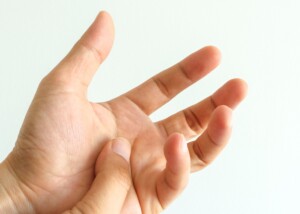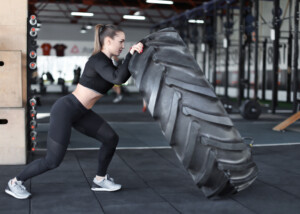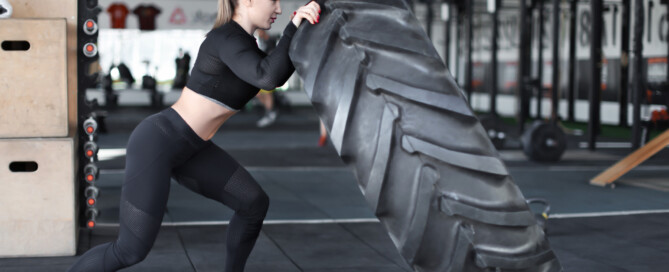Stiff but Painless Fingers in the Morning: Cause, Prevention

The cause of waking with stiff painless fingers in the morning isn’t always arthritis or disease.
This is for people who awaken with stiff but painless fingers that, within half a minute of fist clenching, are back to normal.
This can be prevented, depending on your case. (more…)
How to Hide Mastectomy Drainage Bulbs from Family

Here’s how to hide the JP drain bulbs from family members or anyone else whom you do not want to know of your double mastectomy. (more…)
Is Prostate Cancer Deadlier than Breast Cancer?

The extent that breast cancer awareness is promoted may have you believing that this disease is a LOT deadlier than prostate cancer. (more…)
Enlarged Prostate vs. Prostate Cancer: Symptom Comparison

The symptom overlap from an enlarged prostate and prostate cancer are nearly identical as far as urine-related symptoms. (more…)
Blood from UTI Can Be Visible to the Naked Eye: Appearance

Yes it’s possible to see in the toilet the blood from a urinary tract infection, and it can appear in different ways to the naked eye. (more…)
You Know You’re Ready for a Preventive Double Mastectomy When…

If you’ve been wrestling for a long time on whether or not to have a preventive double mastectomy, here’s how to tell that you’re ready for this procedure. (more…)
Best 5 Exercises to Prepare for Double Mastectomy Recovery

If you’re planning on a preventive double mastectomy, your recovery will be made so much easier if you train your body with five specific exercises.
These guidelines pertain specifically to a preventive (prophylactic) double mastectomy WITHOUT reconstruction.
I am a former personal trainer and lifelong gym rat, having always enjoyed putting my body through killer workouts.
As I type this I’m three days out from my preventive double mastectomy. Prior to the operation I was at a very high level of musculoskeletal fitness.
If you’re out of shape or deconditioned, you may want to delay the surgery a bit to prepare – depending on your anxiety level (e.g., wanting to have your breasts removed ASAP now that you learned you have a gene mutation or elevated risk).
Some women do delay it for various reasons such as scheduling it for after their kids go back to college, or after summer activities are over, or when their preferred companion will be available to stay with them.
Top Five Exercises to Prepare for Preventive Double Mastectomy Recovery
Deadlift
Pull-up
Straight-leg Russian twist
Squat (two types)
Elevated-feet pushup
These exercises are geared towards the recovery period two weeks postop because you will be instructed not to lift your hands overhead.
Other movements may also feel very tight or troublesome, such as trying to put your hair in a ponytail or scratching behind your neck or back.
This is why for two weeks you’ll be instructed to wear button-up shirts.
DEADLIFT
• Works your backside, core and legs.
• Will help you do anything in the house that requires core activation without the use of your hands, such as getting out of bed.
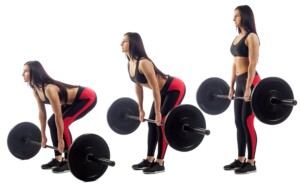
Deadlift. Shutterstock/Everyonephoto Studio
• This whole-body exercise, when done intensely, will shake up your body and thus train it to jump into recovery mode. This will teach your body to jump into recovery mode after your double mastectomy.
• Will strengthen your grip.
PULL-UP
• Few women can do these, but when they can, they will tell you that pull-ups work the devil out of the abs! Yes! Pull-ups are on this list because they will strengthen your abs.

Pull-up. Yes, it’s advanced, but it’s such an effective exercise!
• Several sets of pull-ups, twice a week, will do more for your abs than a thousand crunches every day.
• You’ll need strong abs to shift position in bed and exit bed without using your hands.
• The caveat is that pull-ups are beneficial for double mastectomy recovery ONLY if you can do the real thing: 100 percent body weight from a dead hang, for reps.
• Don’t underestimate yourself. Train hard at these.
STRAIGHT LEG RUSSIAN TWIST
• Straight legged is difficult. This is why I couldn’t find a picture of this in Google Images.
• Start out with bent legs and work towards keeping them straight.
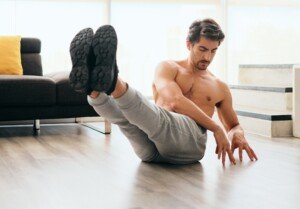
Shutterstock/Diego Cervo
• Clasp hands and twist torso from side to side, tapping elbow to floor with each twist.
• Work up to 25 taps each elbow.
• NOTE: Focus on straightening the legs before worrying about rep count!
• Your core is stronger if you can do 10 reps with straight legs vs. 25 reps with bent legs.
• This exercise will help you manipulate reclined and lying-down positions without using your hands, plus exit bed without using your hands.
SQUAT
Imagine you’re being led to the bathroom first time postop. No matter how fit you are, you will need assistance because you’ll feel unstable due to the general anesthesia (I had a motion-sickness sensation).
When it’s time to lower yourself to the toilet, you’ll feel tempted to clutch the safety rail in the wall and lean your weight into it.
I read in a forum that when a patient, fresh from a double mastectomy, did this, it caused her severe and lingering arm pain.
The solution is squats. If you’re trained in squats, then you will effortlessly lower yourself to the toilet without your hands touching anything and without losing balance (unless you’re in a stupor from anesthesia).
Your body, already trained with squats, will “think” you’re starting a squat set as you lower yourself to the toilet without using your hand on the safety bar.
Even though I was still dizzy from anesthesia, I was steady and solid as I made contact with the toilet seat, and had no problem rising from it without touching that safety rail.
Squats will come in handy around the house in so many ways. Choose your two favorite forms of squat exercise.
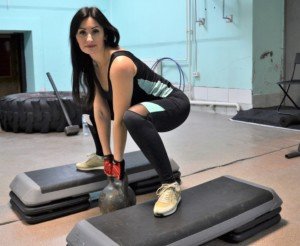
At least one of them should be deep all the way while the other should be with your thighs parallel to the floor.
PUSHUP with ELEVATED FEET
• Core strengthener; will assist the Russian twist and deadlift with abdominal strengthening.
• The core component of this exercise is the only reason it’s on the list.

Shutterstock/Dirima
• The caveat is that it’s difficult for most women and requires the ability to master level pushups.
• Even knee pushups with GOOD FORM will activate the core. Work on them diligently and see what happens!
If your body is very well-trained, you’ll have no problem doing things for yourself around the house immediately after your preventive double mastectomy.
Now maybe you’ll have the luxury of a caretaker, but ask your doctor if it’s wise to have someone enabling you during your double mastectomy recuperation.
If you’re sedentary you could become constipated. Furthermore, staying active around the house (barring overhead movement) will keep your blood circulating more than if you’re having someone waiting on you.
Doing things for yourself during double mastectomy recovery is also good for your spirits – just stay within the confines of your postop instructions.
The more time you have prior to your preventive double mastectomy to become stronger via exercise, the better.
But it’s understandable if anxiety is pushing you to get the double mastectomy asap.
 Lorra Garrick is a former personal trainer certified by the American Council on Exercise. At Bally Total Fitness she trained clients of all ages for fat loss, muscle building, fitness and improved health.
Lorra Garrick is a former personal trainer certified by the American Council on Exercise. At Bally Total Fitness she trained clients of all ages for fat loss, muscle building, fitness and improved health.
.
Top image: Shutterstock/catch-my-eye
No Caregiver After Double Mastectomy: Home Alone Guidelines

There are critical steps you must take if you’ll be alone in your home immediately after your double mastectomy. (more…)
My Body Thought My Double Mastectomy Was Another Gym Workout
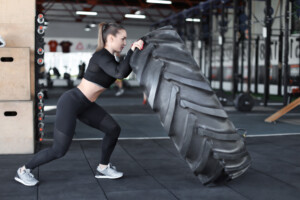
I killed the initial recovery for my preventive double mastectomy.
This is because my body “thought” the surgery was just another one of my strenuous gym workouts. (more…)


